- News
- Reviews
- Bikes
- Components
- Bar tape & grips
- Bottom brackets
- Brake & gear cables
- Brake & STI levers
- Brake pads & spares
- Brakes
- Cassettes & freewheels
- Chains
- Chainsets & chainrings
- Derailleurs - front
- Derailleurs - rear
- Forks
- Gear levers & shifters
- Groupsets
- Handlebars & extensions
- Headsets
- Hubs
- Inner tubes
- Pedals
- Quick releases & skewers
- Saddles
- Seatposts
- Stems
- Wheels
- Tyres
- Tubeless valves
- Accessories
- Accessories - misc
- Computer mounts
- Bags
- Bar ends
- Bike bags & cases
- Bottle cages
- Bottles
- Cameras
- Car racks
- Child seats
- Computers
- Glasses
- GPS units
- Helmets
- Lights - front
- Lights - rear
- Lights - sets
- Locks
- Mirrors
- Mudguards
- Racks
- Pumps & CO2 inflators
- Puncture kits
- Reflectives
- Smart watches
- Stands and racks
- Trailers
- Clothing
- Health, fitness and nutrition
- Tools and workshop
- Miscellaneous
- Buyers Guides
- Features
- Forum
- Recommends
- Podcast
review
£255.00
VERDICT:
Much better video quality and an improved light spec from Cycliq's front-facing unit
Weight:
195g
Contact:
At road.cc every product is thoroughly tested for as long as it takes to get a proper insight into how well it works. Our reviewers are experienced cyclists that we trust to be objective. While we strive to ensure that opinions expressed are backed up by facts, reviews are by their nature an informed opinion, not a definitive verdict. We don't intentionally try to break anything (except locks) but we do try to look for weak points in any design. The overall score is not just an average of the other scores: it reflects both a product's function and value – with value determined by how a product compares with items of similar spec, quality, and price.
What the road.cc scores meanGood scores are more common than bad, because fortunately good products are more common than bad.
- Exceptional
- Excellent
- Very Good
- Good
- Quite good
- Average
- Not so good
- Poor
- Bad
- Appalling
We reviewed the original Fly12 back in June 2016 and it was really good. The new one is better: the light is a bit brighter, the camera is better, it's a neater package, it's lighter and it charges faster. If you're looking for a POV camera to record your commute it ticks all the boxes, and the footage is good enough to be used in projects with higher production values too. It's expensive, but given the performance I would say it's a decent investment.
- Pros: Good quality, stable video, light is useful
- Cons: The mount is a bit fiddly, app can be clunky
The new Fly12 (10.3cm x 5.9cm x 3.5cm) is a bit bigger than the old one (8.4cm x 5.5cm x 3.3cm) but it's also a bit lighter (195g vs 244g) and the stealthy black finish makes it look pretty unobtrusive.
> Find your nearest dealer here
The mount has changed: there's a new 1/8 turn twist mount, and in the box you get both a bar clamp and an adapter to hang the camera from a GoPro mount. Either way it's pretty secure; I found it worked best hung below the bars as it's out of the way and there's less of a tendency for the weight of the camera to nudge the mount over the lumps and bumps. If anything the mount is too tight a fit: that's good in that it doesn't wobble, but it's a struggle to get into the mount at times and you have to apply a bit more force than I'm comfortable with for a plastic mount. It also makes taking it off the mount when riding difficult.
The camera will only mount one way, with a clockwise twist, but if you've slung the camera under your bars you need to remember to do it anti-clockwise instead, because it's upside down. More intelligent and spatially aware people than me will probably manage that, but I always ended up jamming it in the wrong way. Because the mount is tight, it's a while before you remember. Also, when hanging the Fly12 under the handlebar the stem tends to get in the way, making it even more difficult to get on and off.
Before and after
Like before, there's a camera and a light side by side in the front. Maximum video resolution moves up to 1080/60, with the ability to shoot in HDR in 1080/30 which should be good for sunny days where you're moving between light and shade. The light has increased in power as well, to 600 lumens from 400. There are a wealth of light settings, and you can specify which ones you want available from the app (more on that in a bit). There are two hardware buttons on the side.
As well as being generally more highly specced, the new Fly12 includes two things that weren't on the original version. Firstly, the camera has electronic 6-axis stabilisation, meaning that you should get a much improved quality of video (though you can't shoot in HDR with it enabled). When you're trying to read the number plate of the car that just cut you up, it's nice if the footage isn't bouncing around all over the place. The second is ANT+ connectivity, meaning you can control the Fly12 from your Garmin or other bar-mounted GPS. Assuming you don't mount your phone on the bars, this makes it much easier to control the Fly12 on the go.
One of George's bugbears on the original Fly12 was the speed of charging. The good news is that the new unit uses a USB-C connection which allows for a faster recharge time. Cycliq says you can fully charge it in two and a half hours; I managed it in about that from a high-output wall charger, from the computer it takes longer. Either way: plenty quick enough to juice up during work hours, whereas before it wasn't a cert that you'd get it fully charged up before the ride home.
Continuous recording
Like its predecessor, and other cameras designed to continuously record footage, the Fly12 splits your ride footage into segments, and continuously loops the recording, chopping the video into 5-, 10- or 15-minute segments depending on your preference: when the card is full, the camera deletes the oldest footage to make space for new recordings. That means you don't ever have to worry about making space for new video.
You wouldn't want footage of a collision to get overwritten though, and the Fly12 has an incident detection system built in. If the camera detects that it is tilted more than 60° from the horizontal, it triggers an automatic process which locks the current footage, and the segment either side.
If you see something you want to keep that didn't result in you being knocked off (a close pass, or an incident involving another road user) then you can press the Q button on the side of the Fly12 and it'll have the same effect. The footage can be timestamped within the camera so there's no doubt when incidents occurred.
Those same accelerometers can also be used as a rudimentary alarm: if your phone is in range of your bike you can get the camera to ping you if the bike gets moved. If you're sitting in a cafe with your bike nearby but out of sight, it might be handy I guess, but the range is pretty limited, especially when there are walls in the way, and anywhere you're likely to need it you'd be better off locking your bike up or keeping it in view.
Fine footage
Here's some footage from the camera, taken in various conditions from a snowy mountain bike ride to a sunny Italian trip. You can also download some raw files here – you will have to download them to see the actual footage; the drive preview is low-resolution.
The first and most obvious point is that the footage is very good. The 135° angle lens gives a nice wide view and the picture is sharp and clear, making it easy to read car number plates, for example. The six-axis image stabilisation does a great job of making the recorded image nice and smooth, although the horizontal stabilisation means that you get a bit of a delay and then a sharp movement when you start a turn. That's not so much of an issue when you're turning from one road to another, but it can make the video a bit choppy when you're out of the saddle, or you're struggling up a steep climb.
Weatherproofing
Waterproofing seems up to scratch: I took it out in some pretty tedious weather, and on one ride that's about as bad as I've experienced:sodden and freezing. The camera kept going, and flipping the port hatch revealed no issues with water getting in. This is what that ride looked like:
There's always a chance of condensation forming inside the camera if you move from hot to cold air, or vice versa, but I didn't have any issues with the Fly12 there, even when we went out for three hours in the snow (front footage is from the Fly12, rear from the new Fly6). The hydrophobic coating on the lens does a really good job of keeping the video footage usable, even in really rotten conditions. Sometimes a drop will get in the way but if you're moving at any pace it won't be there long.
I put a 32GB card in the Fly12, and that seems to be enough for about two and a half hours of footage in 1080/60. You'll get more if you drop to 1080/30, but that should be good for most riding. If you're doing a long ride that you want to document, you'll need to be a bit more sparing than just turning the camera on and heading out. Probably you'll need to be a bit careful about the battery life in that case too. Cycliq claims an eight-hour battery life for the camera (without the light on), which is down from the 10 hours on the previous model (with the same battery capacity), but probably more realistic and achievable: it seems to get pretty close to that even in crappy, cold, UK conditions, and you still get about five hours with the light on low.
Once you fire the light up, run-times go down; the flashing modes don't affect the battery life that much but if you're on 600 lumens of full power you're looking at a couple of hours. The Fly12 will turn the camera off first to preserve battery life if you have the light on, and if you have a backup battery you can run the light and charge it at the same time, although that means you have to have the side port open so it's not an option for a wet ride.
Light: bright enough
Talking of the light, it's pretty good. The Fly12 is an all-purpose unit so you don't get a dedicated, flattened road beam, but I found that with the unit positioned correctly to throw the light where you needed it the camera was getting a sensible field of view too. The uprated LED from the last unit means that you get a bit more licence along the unlit lanes.
As 600-lumen lights go it doesn't feel like the brightest I've tried, but it's plenty enough light on high beam for clipping along out of town in the dark, and the flash and pulse modes are good for daylight running, and lit streets. It's a pity there's no side visibility, but the proximity of the camera probably prohibits that. It is a light that I'd be happy enough running on its own, though. One thing to note is that the light can wash out number plates if it's on full beam, if you think you might need the footage to hand over to your local constabulary...
App: OK
The app is okay. High praise indeed! Basically, you can connect your Fly12 to your phone and you have access to all the settings, so you can configure the camera the way you want. You can only have one camera at a time connected to the Android App I used, so if you have both a Fly12 and a Fly 6 it's a bit of a faff to control them from your phone: turning them on and off requires connecting to one, turning it on, disconnecting, connecting to the other one and turning that on too.
There are certain combinations of settings you can't do: the camera won't shoot in HDR and also stabilise the footage, presumably because running both of those processes at once in the camera is a bit too much for the processor. You used to have the option to transfer footage to your phone via WiFi, but the new units don't do that. To be honest it didn't work that well, but now dragging footage off requires a computer, and the desktop sharing app.
There's also a desktop settings app that performs the same function as the smartphone app. The app part of the package feels more like a work in progress, really, while the camera unit itself is really good. I tended to use it standalone, and just dip into the app when I wanted to change stuff.
Conclusion
Overall? It's a high quality camera and a decent light, for the same kind of money you'd pay for a high quality camera and a decent light. Getting separate units gives you a bit more versatility; having just the one saves clutter on your handlebar.
I like it as a unit and the footage is good enough for more than commuting. It works pretty well hand held too, with the image stabilisation giving you pretty smooth shots, so it's good for recording your B-roll footage as well as your ride. It's a pity the app suite doesn't quite match up to the Fly12 itself.
Verdict
Much better video quality and an improved light spec from Cycliq's front-facing unit
road.cc test report
Make and model: Cycliq Fly12 HD Camera and Front Light
Size tested: n/a
Tell us what the light is for
Cycliq says, "The new generation of our integrated, front-facing bike camera and safety light, engineered to give you super-sharp video recording, a powerful safety light and impressive battery life."
Tell us some more about the technical aspects of the light?
CAMERA
Full 1080p HD camera + audio
Smart looping video
6-axis image stabilisation
Weather and dust proof
LIGHT + BATTERY
Bright 600-lumen front safety light
Massive 8 hr run time
USB-C fast charge
Waterproof to 1m
SAFETY
Black box incident protection
Home-safe mode
Integrated bike alarm
Simple two-button operation
CONNECTIVITY
Control via ANT+ connectivity
Connect to smartphone app via Bluetooth
Strava integration
All-new 1/8 quick-release mounting
SPECIFICATIONS
Video resolution
1920 x 1080p @ 60 fps
1920 x 1080p @ 30 fps
1920 x 1080p HDR @ 30 fps
View angle
135° ultra-wide angle
Video format
MP4 - Records 5, 10 and 15-minute segments
Image stabilisation
6-axis image stabilisation
Light power
600 lumens with various light and dimming settings
Port
USB-C to charge and connect to PC & Mac
Connectivity
ANT+, Bluetooth
Size
8.4cm (L) x 5.5cm (W) x 3.3cm (H)
Weight
195g / 5.5oz
Battery
4200mAh, 15.96wh (up to 8 hours life) with 2.5hr fast recharging
Rate the light for quality of construction:
8/10
Good overall.
Rate the light for design and ease of use. How simple was the light to use?
7/10
Pretty easy to use the unit itself, app is a bit clunky.
Rate the light for the design and usability of the clamping system/s
5/10
Eighth turn mount is too stiff and doesn't work very well hung below the bars.
Rate the light for waterproofing. How did it stand up to the elements?
10/10
No issues even in really terrible weather.
Rate the light for battery life. How long did it last? How long did it take to recharge?
8/10
Good, with 5 hours of recording from the camera with the light on low.
Rate the light for performance:
8/10
Rate the light for durability:
7/10
Rate the light for weight:
7/10
Rate the light for value:
6/10
Tell us how the light performed overall when used for its designed purpose
It's a good camera and a decent light, in a neat package. The footage is very good.
Tell us what you particularly liked about the light
Quality of the video, neat on the bars.
Tell us what you particularly disliked about the light
Fiddly mount, clunky app.
Did you enjoy using the light? Yes
Would you consider buying the light? Yes
Would you recommend the light to a friend? Yes
Use this box to explain your overall score
It's a neat package that does the job it's designed to do very well. The video quality will mean it appeals to more than just commuters. In terms of value it's not really cheaper than buying a comparable separate camera/light combo.
About the tester
Age: 44
I usually ride: whatever I'm testing... My best bike is: Kinesis Tripster ATR, Kinesis Aithein
I've been riding for: Over 20 years I ride: Every day I would class myself as: Experienced
I regularly do the following types of riding: road racing, time trialling, cyclo-cross, commuting, club rides, sportives, general fitness riding, fixed/singlespeed, mountain biking, Mountain Bike Bog Snorkelling, track
Dave is a founding father of road.cc, having previously worked on Cycling Plus and What Mountain Bike magazines back in the day. He also writes about e-bikes for our sister publication ebiketips. He's won three mountain bike bog snorkelling World Championships, and races at the back of the third cats.
Latest Comments
- Destroyer666 11 min 34 sec ago
"Can we please stop paying attention to him?"= cancel culture. It does not matter on what side of the fence you are regarding a matter. So please,...
- Rendel Harris 32 min 49 sec ago
I know they're the dregs but that really would be scraping the bottom of the barrel.
- E6toSE3 50 min 44 sec ago
No. New world economics notwithstanding, prices of tech stuff have mostly come down a lot over the decades, sometimes in actual numbers of £s and ...
- Dnnnnnn 1 hour 14 min ago
+1 for the physio. I'd knee problems a few years back - except the problem wasn't really my knees, it was muscles above and below. I doubt I'd have...
- Oldfatgit 1 hour 37 min ago
It's still 'better' than the 6 points and small fine the guy that broke my back [and ulna, and knee, and 11 ribs] got.
- quiff 2 hours 14 min ago
Have a look here - https://road.cc/content/forum/bike-respray-312357
- essexian 2 hours 18 min ago
In what way does he do that? I am sure you won't mind providing information to support your comment. Thanks.
- chrisonabike 2 hours 39 min ago
Just another SUV driver in the Bible there. His conveyance was like a whale - but an earlier traveller had something as roomy as an ark!...
- Disgusted of Tunbridge Wells 3 hours 11 min ago
Kendo (Japanese: 剣道, Hepburn: Kendō, lit. 'sword way' or 'sword path' or 'way of the sword') is a modern Japanese martial art, descended from...






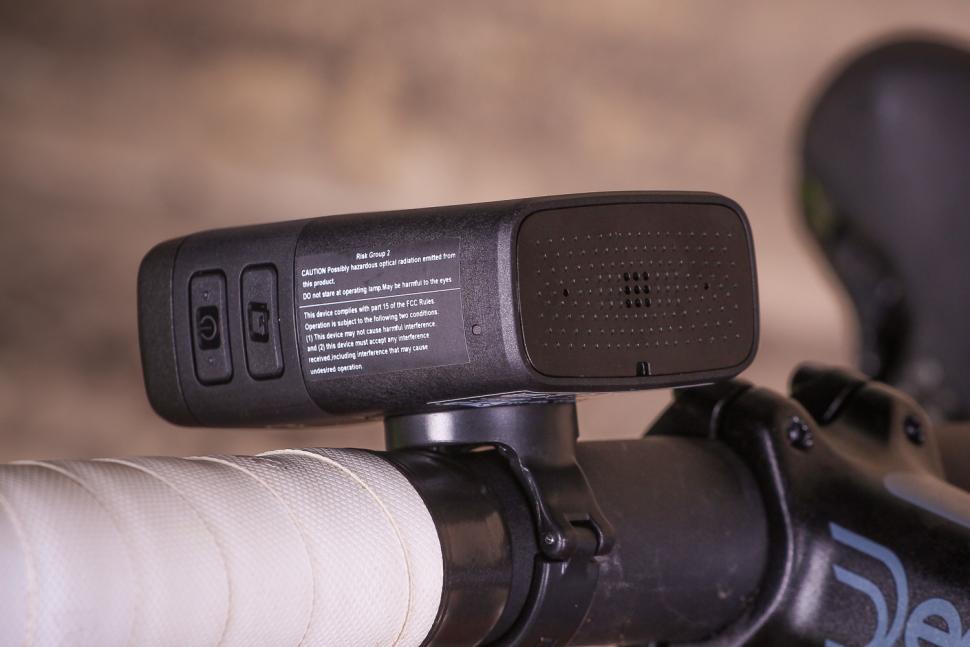
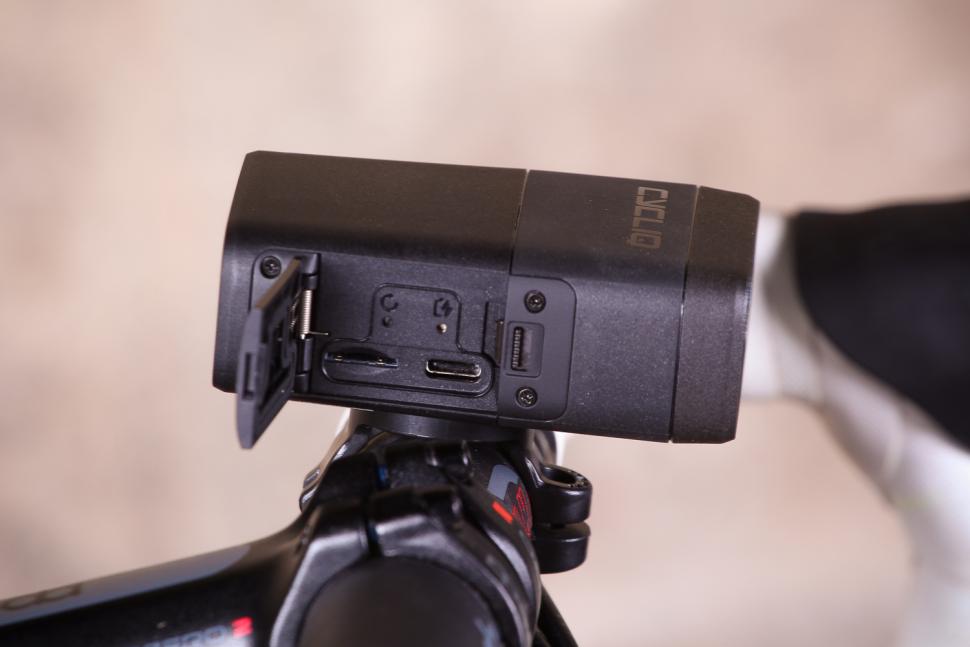
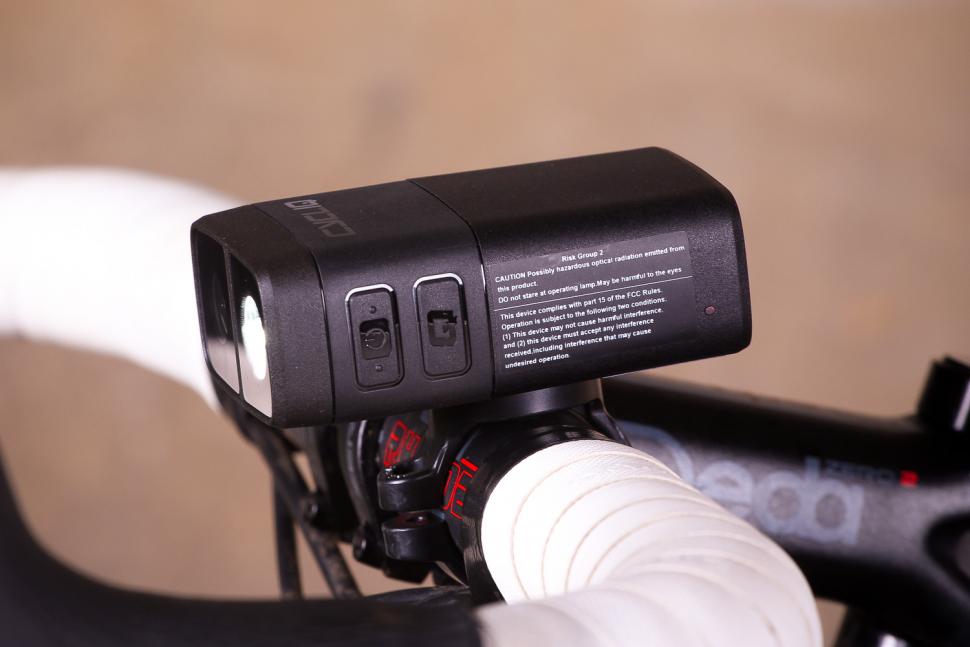
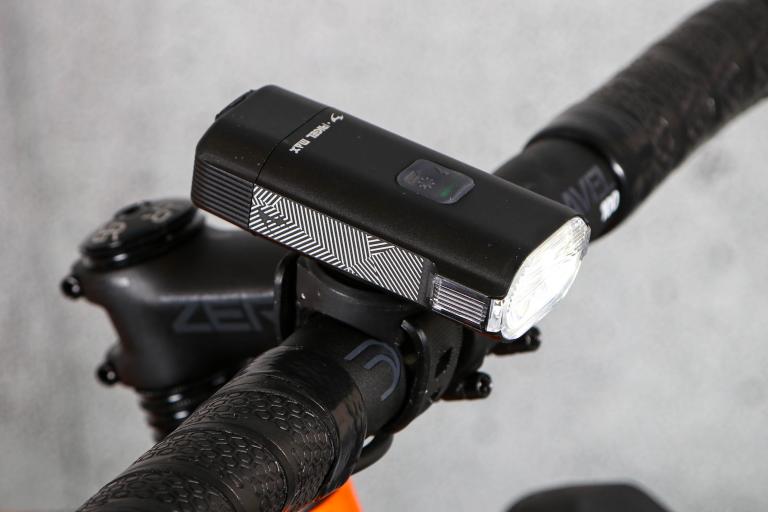
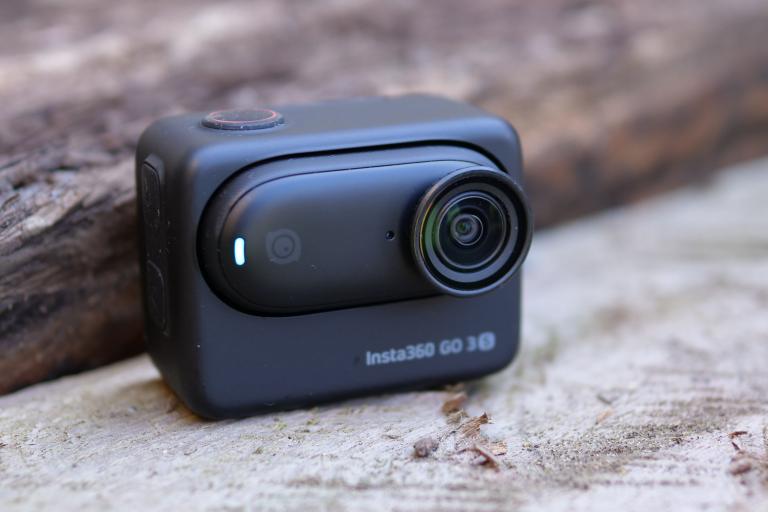
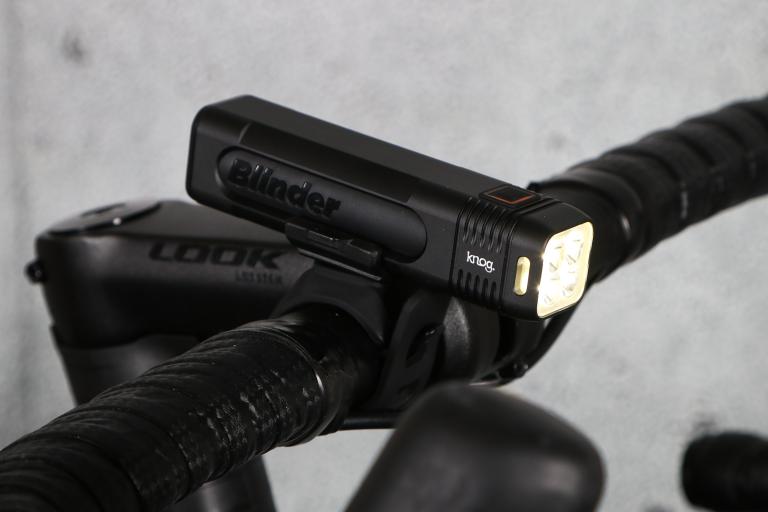
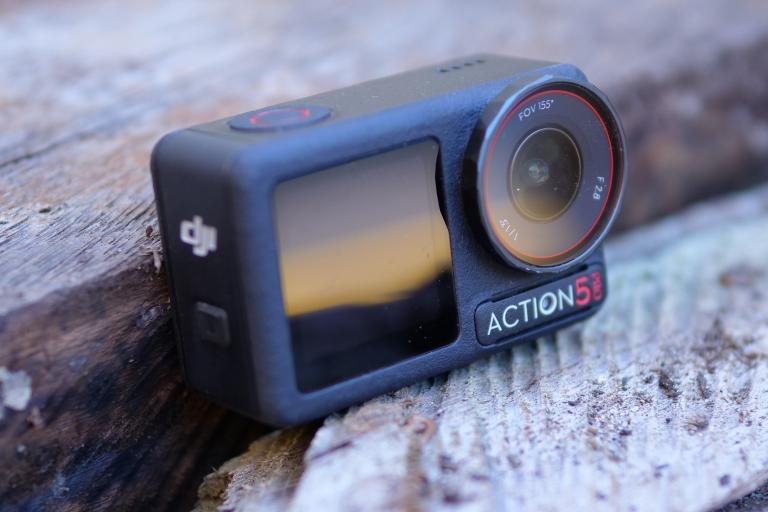
Add new comment
25 comments
The normal Garmin compatible 1/4 mount works well as a replacement for the Cycliq 1/8 mount.
Is the 1/8 twist mount any kind of standard? The supplied mount lacks any roll or yaw adjustability and I would like an alternative so that I can mount the camera properly for my particular bars.
Six-axis stabilisation? How does that work when the camera is in constant motion along one of the axes?
It's measuring acceleration, which is zero when in constant motion.
BTW the diy replacement battery in my fly6 is still going strong a year later, just in case anyone was wondering...
Suggest using the small safety strap with the fly12ce. The plastic mount is quite fragile for the weight of the unit. Going over a bump (on my roadbike), the mount sheared in two sending the light crashing to the ground, scratching the unit. Cycliq would not replace the unit, however they did send two replacement mounts and suggested I use the small strap as a safety - which I now do for both the front and rear (fly6ce).
20181130_120913.jpg
I've got the same models as Plasterer's Radio and similarly, I'm happy with both of mine.
I'm surprised at the new Fly12 being even bigger - the original one is plenty big enough. And user-replacable batteries (18650s) would be nice.
I the interests of balance, I've had the 2nd gen FLy6 and kickstarter Fly12 for quite a while now and battery performance has been excellent.
The Fly6was replaced as it stopped working after 13 months despite being out of warranty. Pretty good customer service from my experience.
I'd buy again.
This business of giving rechargable batteries a 'top-up' charge (I'm not just thinking of Fly6/12s here, most of my bike lights are rechargable with non-replacable/sealed batteries).
Is it better then to recharge once a week (presuming the unit lasts that long), than a daily 'get to work, stick it on a USB cable on the laptop for a couple of hours'?
Also, as I understand it, rechargable batteries can develop a capacity memory (could be the wrong expression), so should be completly discharged and recharged every so often.
Advice please.
My Fly6 is still going strong with daily commute usage after two years. I've just replaced it with a fly6 ce. Would NOT recommend using the lighting network stuff - very poorly implemented. Maybe they will eventually fix the useability issues. Their software is rubbish - apps very poor on both pc and mobile.
12-18months is awful, it's the failing of a dual purpose system that draws more energy from the single power source and thus makes an expensive bit of kit useless in pretty short order. Wouldn't touch them with a bargepole.
Also re the hanging the camera under the bar, a simple bit of software can allow you to have it turn the video the correct way no matter which 90 degree orientation you have it at. My Ion Air Pro has this feature.
That's just crazy that they can't replace the battery. Disgusting wastage.
Gave up on Cycliq! I had the Fly 6 and Fly 6CE rear camera lights both of which started switching themselves off after about 1/2 an hour into the ride. I had the Fly 12 which intermittently kept switching itself off then the Fly 12CE that had various bugs including a really short battery life. After various warranty claims I ended up with another Fly12 CE which broke three different mounts and would have fell off and smashed onto the road if it were not for the supplied lanyard. To be fair to Cycliq they were very helpful and sent me universal mounts and a duo mount free of charge but great concept ruined by reliability and build quality. Instead, I returned each and every one and bought a GoPro Sesion instead along with Ecstapro battery pack and Fabric light!
18 months is possibly about right for the charge cycles of the battery in a Fly6. It's got a sealed in 18650 battery that usually has 300-500 charge cycles. It might be just a dead battery.
Not that that makes 18 months the right service life for a bike light/camera. It's just bonkers that devices costing that much (and more - see latest superphones & laptops) have non-serviceable or replaceable batteries.
I would avoid buying any Cycliq gear. I had a rear light/camera that simply expired after some 18 months. It stopped charging.
The response from their customer services team to explain why (without having looked at it, but relying on my description of it not charging) was that "like any other devices, natural unit deterioration over time can be expected depending on the usage."
So there you go, an 18 month obsolesence period - an extraordinary rate by any measure for a device designed and intended to be used for cycling in all conditions.
I think I'll stick to companies who appear able to make products that are fit for purpose.
They didn't offer to replace the batteries ? Even for a fee?
My Fly6 battery expired just after 12 months. But it got heavy usage, commuting every day. It was sooner than I expected it to fail.
I bought a branded tagged and wired 18650 from Farnell for £17 and swapped the battery out myself. It works fine now and will hopefully last longer than the original battery from a manufacturer I’d never heard of.
I did think that even if I ended up buying a new fly6, I would be happy to spend the £8 a month it worked out at for the peace of mind it provided.
For a while when it was out of action, I resorted to a helmet mounted camera. It was very big, heavy and obvious up there on my helmet. I’m not sure if it was just my perception, but I felt drivers were more considerate when I had this more visible camera on. But I couldn’t put up with the weight on my head, so glad to be back to the cyclic setup.
This.
People expect batteries to last thousands of charge cycles. They currently don't - typically 500 is about it, max. So if you are running for a few hours a day and charging daily, a year is about right.
Sounds like you've got a potential business refurbing dead Cycliq Fly6's though
No they don't, they expect to be able to replace the battery when it runs out.
Stating 8 hour battery life so even assuming 1 hour commute each way used throughout the year should be <100 charging cycles per year. So based on the 500 cycles your suggest should last nearly 5 years before needing replacing. One years usage for something this cost is dreadful
I don’t think any insurance company would cover my shonky DIY repair jobs!
Environmental conditions are another factor that contributes to battery degradation. I ran my light through cold winters which would have accelerated the wear rate. The fly6 takes quite a high current draw from a single cell, which will also contribute to accelerated wear.
Yes, perhaps an easily replaceable cell would be an option. Bare 18650 cells would be too dangerous for user replacement, but a housed cell similar to the screw on batteries that the cateye volt 600 lights use could work. Downside would be a bulkier unit and increased weight...
Hmm, so we can expect these electric cars to conk out after what, less than 2 years? Or will they be swapping out the batteries on the second service? Something does not add up.
My Fly6 battery expired just after 12 months. But it got heavy usage, commuting every day. It was sooner than I expected it to fail.
I bought a branded tagged and wired 18650 from Farnell for £17 and swapped the battery out myself. It works fine now and will hopefully last longer than the original battery from a manufacturer I’d never heard of.
I did think that even if I ended up buying a new fly6, I would be happy to spend the £8 a month it worked out at for the peace of mind it provided.
For a while when it was out of action, I resorted to a helmet mounted camera. It was very big, heavy and obvious up there on my helmet. I’m not sure if it was just my perception, but I felt drivers were more considerate when I had this more visible camera on. But I couldn’t put up with the weight on my head, so glad to be back to the cyclic setup.
[/quote]
Hey HoarseMann, for future reference how did you manage to take your Fly6 apart and what tools did you need, in case my new Fly6 manages to outlive the battery ?
Hey HoarseMann, for future reference how did you manage to take your Fly6 apart and what tools did you need, in case my new Fly6 manages to outlive the battery ?
[/quote]
It was a second gen Fly6 with the bracket rather than the later Velcro strap. Four small Phillips head screws on the back behind rubber bungs that need removing first with tweezers.
http://uk.farnell.com/bak/18650ca-1s-3j/battery-lithium-ion-3-7v-2250mah/dp/2401852?ost=2401852&ddkey=http%3Aen-GB%2FElement14_United_Kingdom%2Fsearch
looks like it’s got the right JST connector on, but it was a bigger version, so had to swap the connector over (chopped off and spliced cables with soldered joint and shrink wrap insulation). Carefully, as a shorted lithium battery can explode or catch fire .
Also, this battery is bit longer, so I had to cut out some of the plastic supports from inside the back cover. It’s not the easiest job and not without risk if done badly, so proceed with caution!
It was a second gen Fly6 with the bracket rather than the later Velcro strap. Four small Phillips head screws on the back behind rubber bungs that need removing first with tweezers.
http://uk.farnell.com/bak/18650ca-1s-3j/battery-lithium-ion-3-7v-2250mah/dp/2401852?ost=2401852&ddkey=http%3Aen-GB%2FElement14_United_Kingdom%2Fsearch
looks like it’s got the right JST connector on, but it was a bigger version, so had to swap the connector over (chopped off and spliced cables with soldered joint and shrink wrap insulation). Carefully, as a shorted lithium battery can explode or catch fire .
Also, this battery is bit longer, so I had to cut out some of the plastic supports from inside the back cover. It’s not the easiest job and not without risk if done badly, so proceed with caution!
[/quote]
Cheers HoarseMann, I can see the rubber bungs but I didn't realise there were screws behind.
And if you need to record a Strava KoM attempt up a dried river bed in Italy, this is ideal...